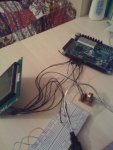cosmicvoid
Master
That was mentioned here:
https://forum.crystalfontz.com/showpost.php?p=25985&postcount=28
and here:
https://forum.crystalfontz.com/showpost.php?p=25987&postcount=30
https://forum.crystalfontz.com/showpost.php?p=25985&postcount=28
and here:
https://forum.crystalfontz.com/showpost.php?p=25987&postcount=30
Looking for additional LCD resources? Check out our LCD blog for the latest developments in LCD technology.

